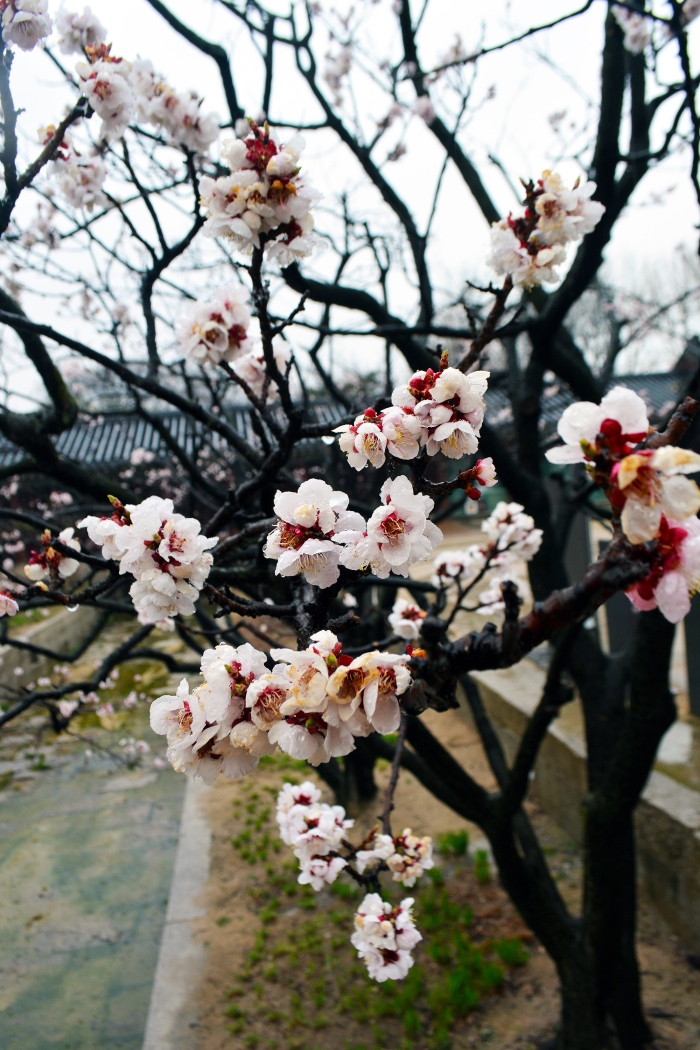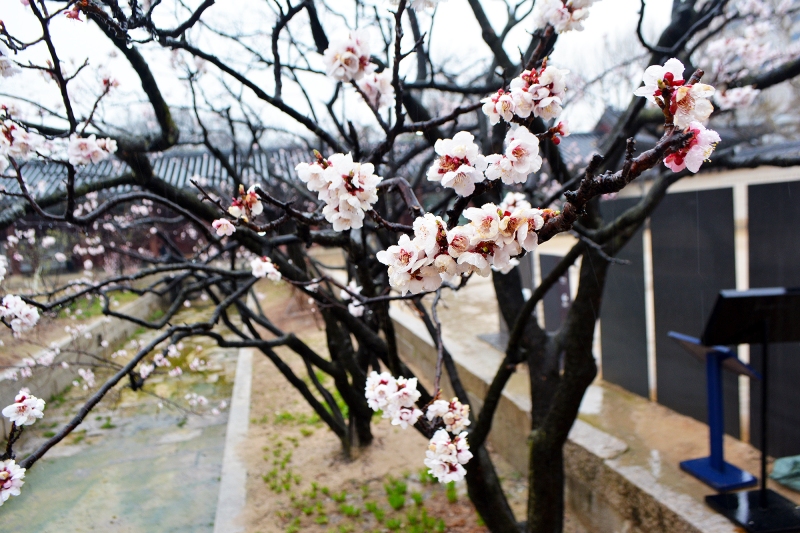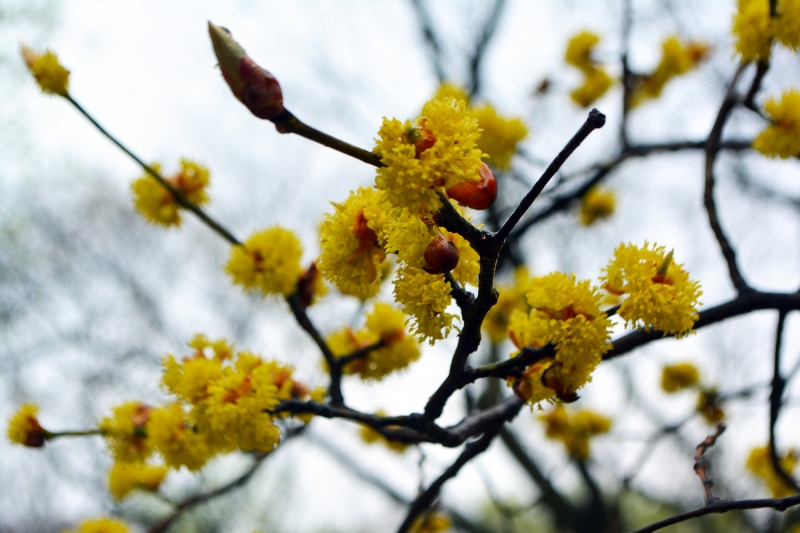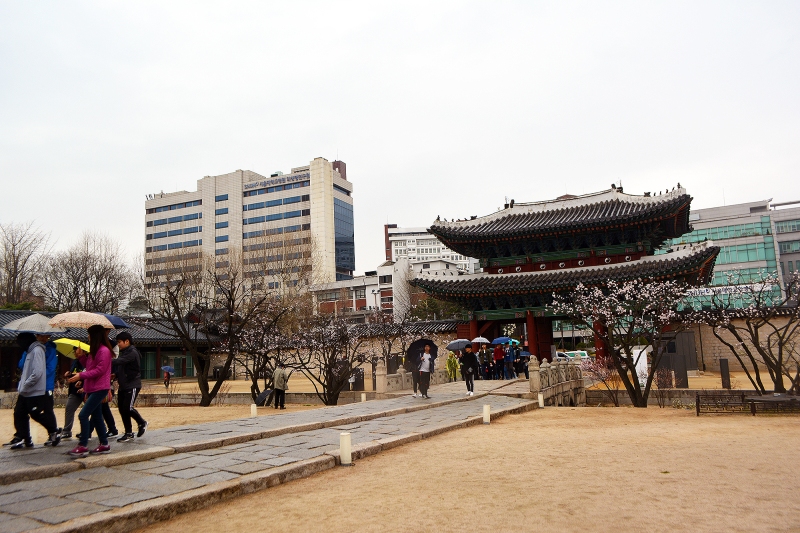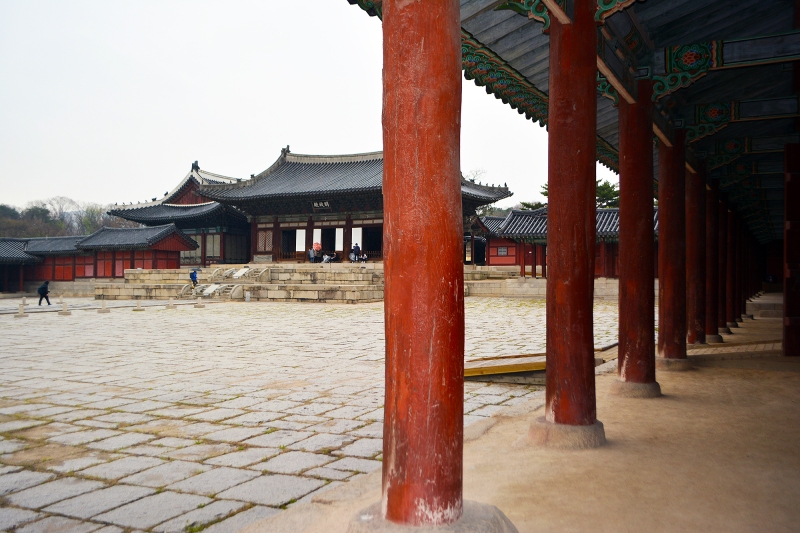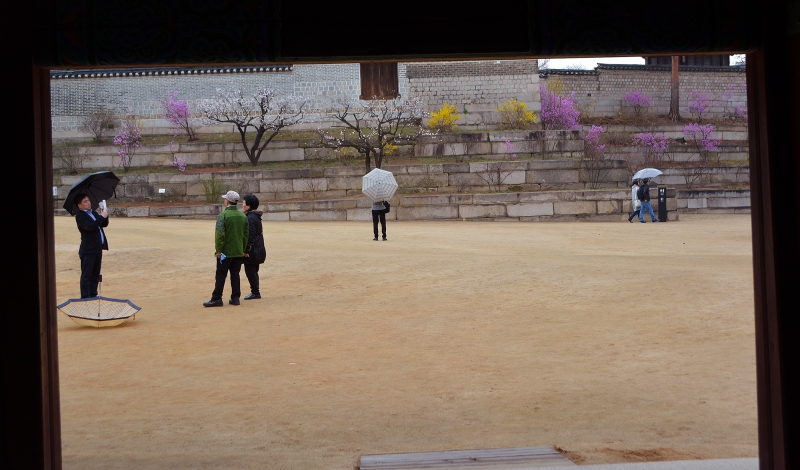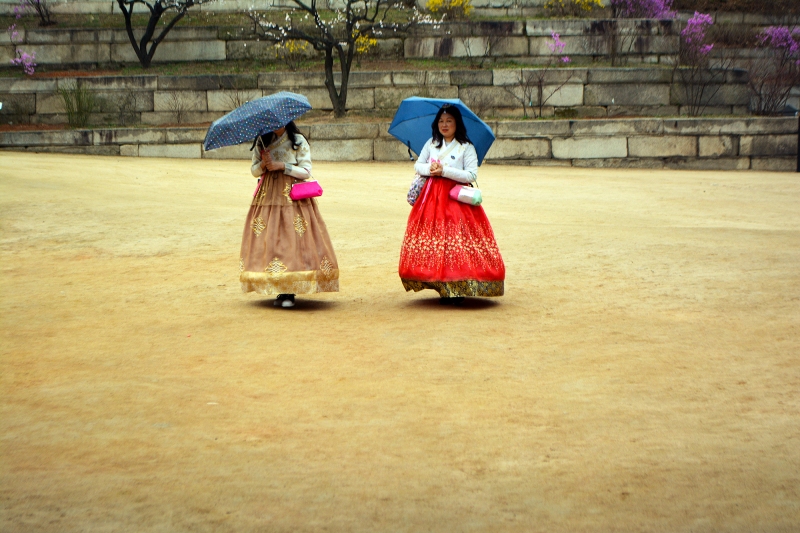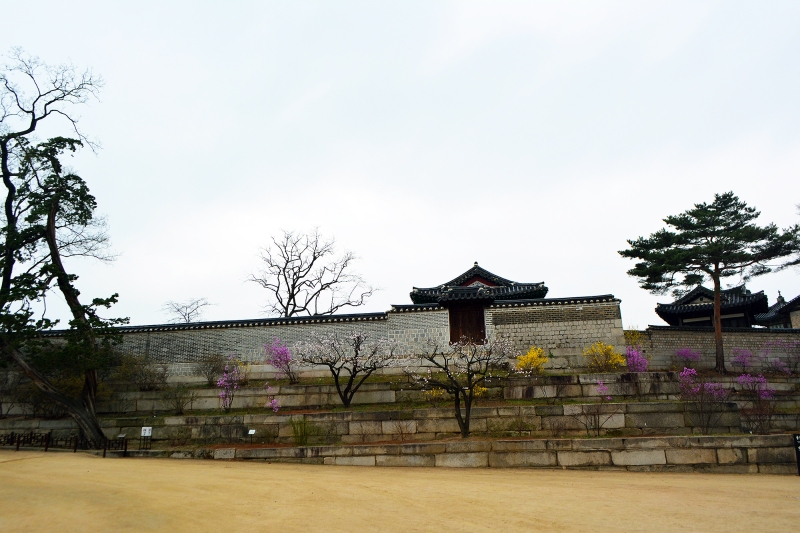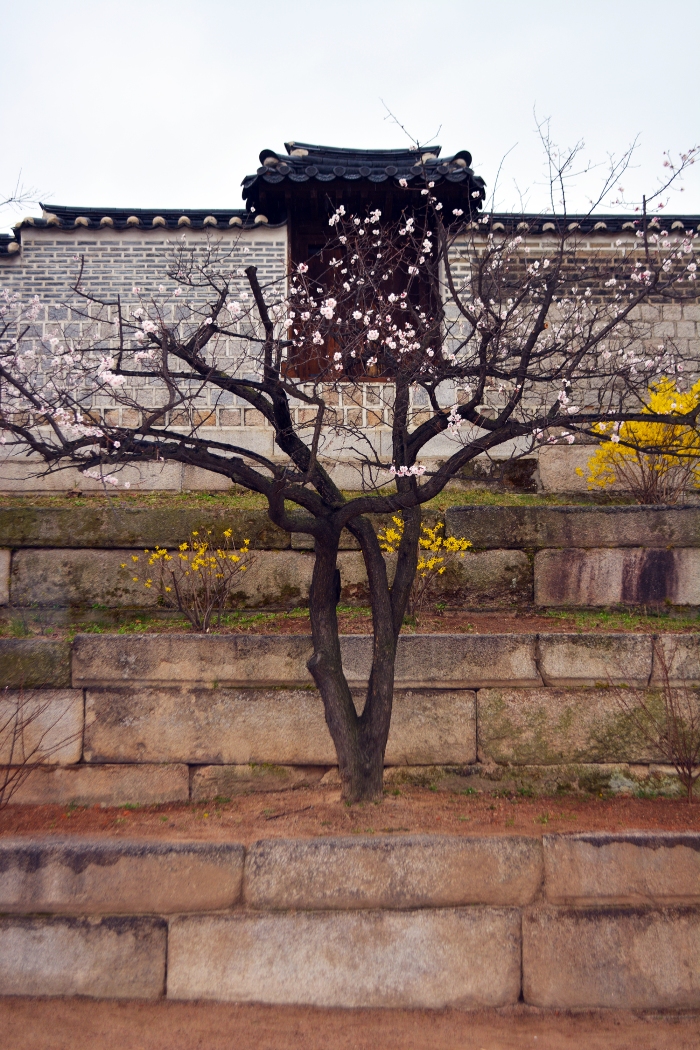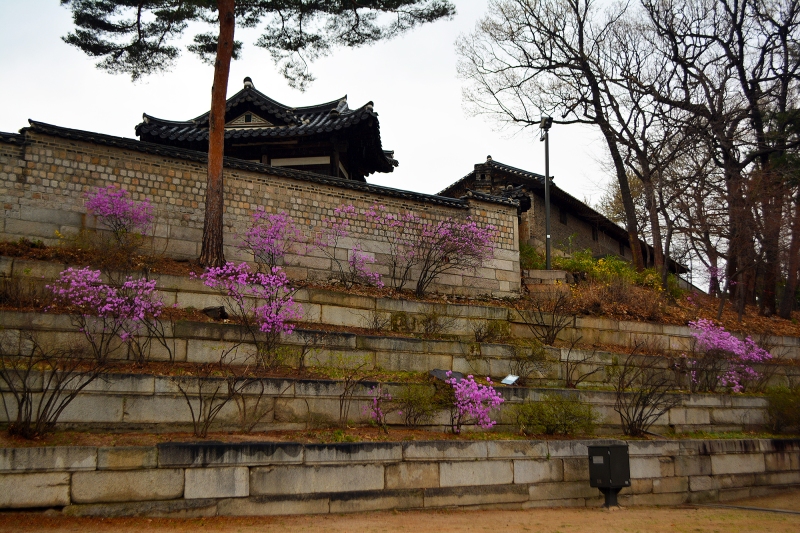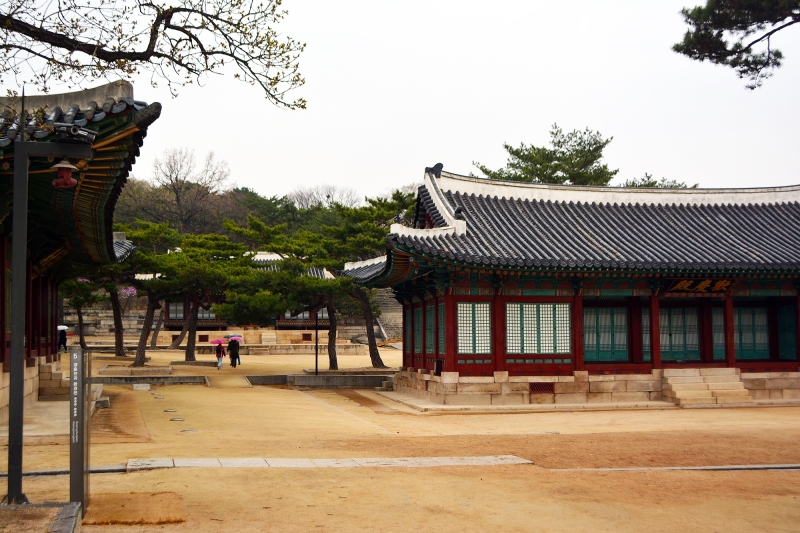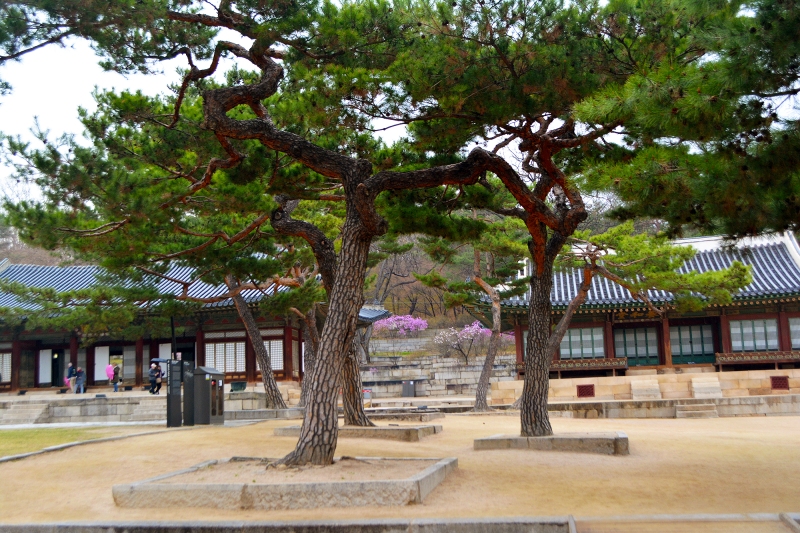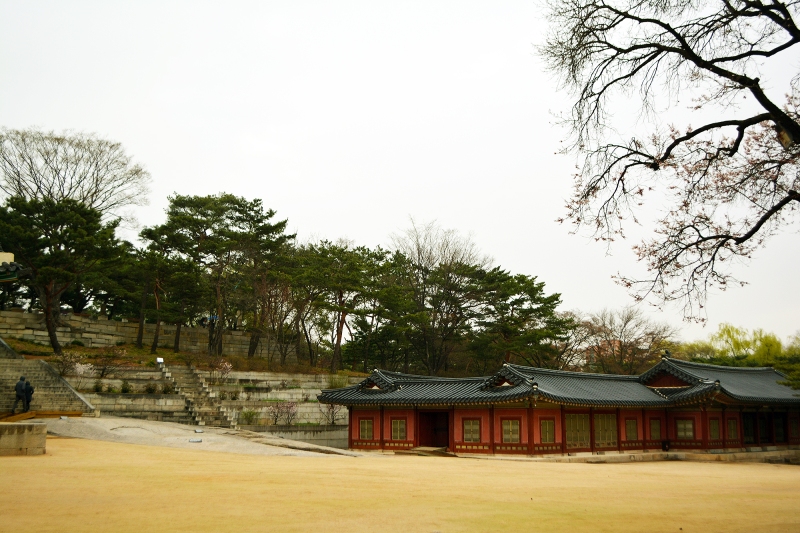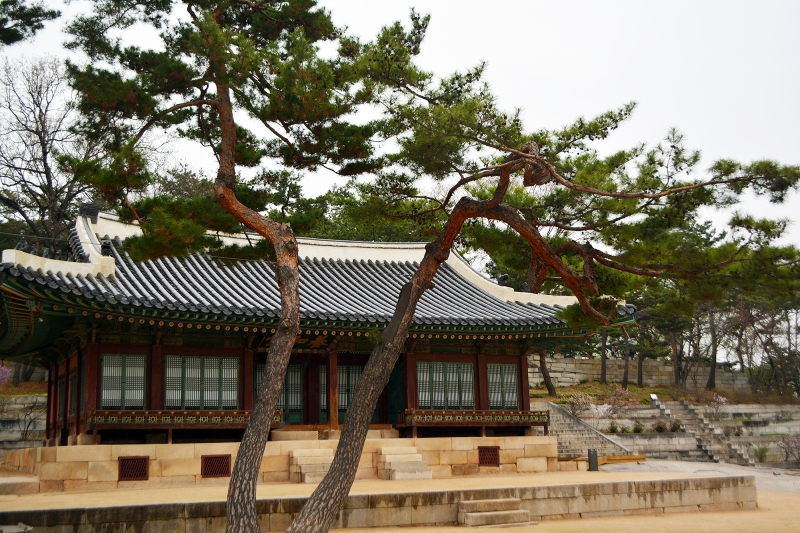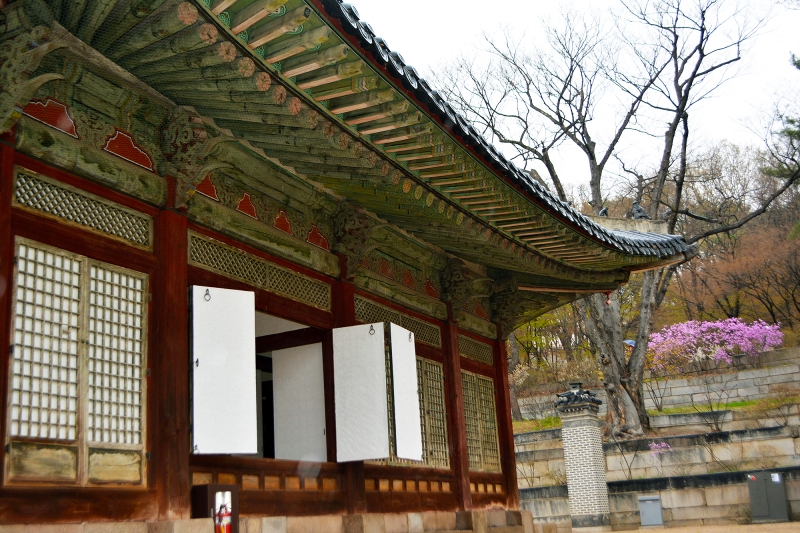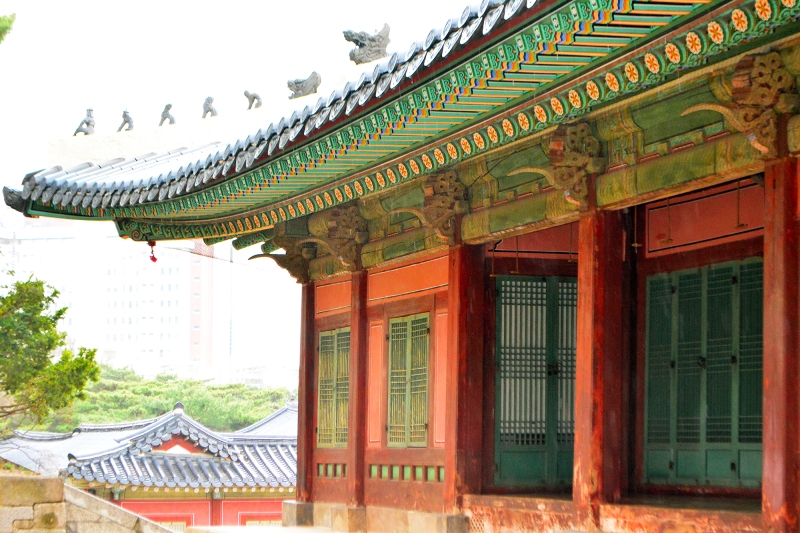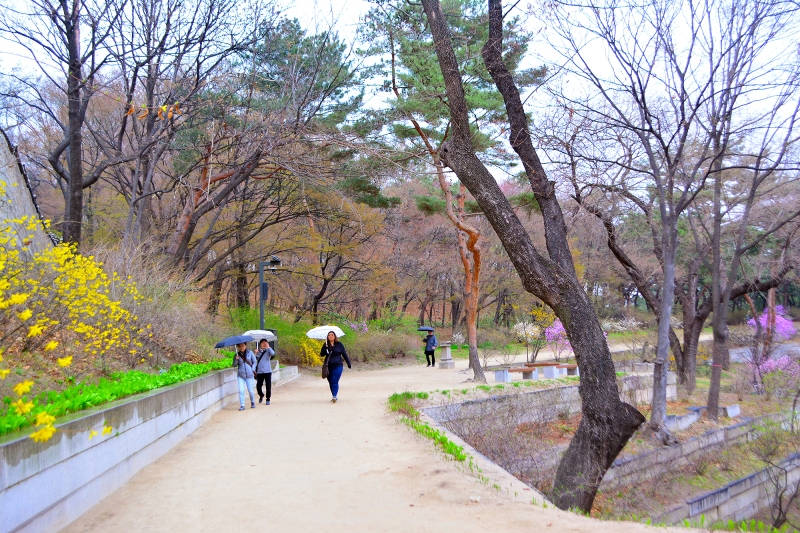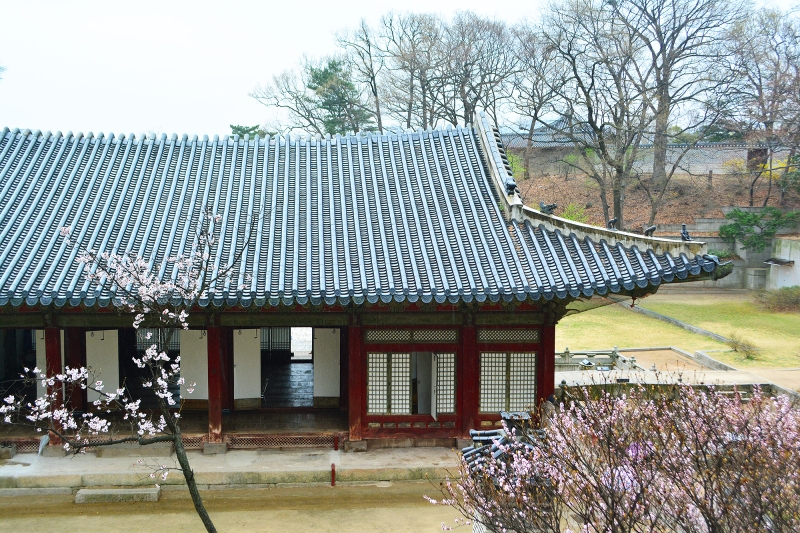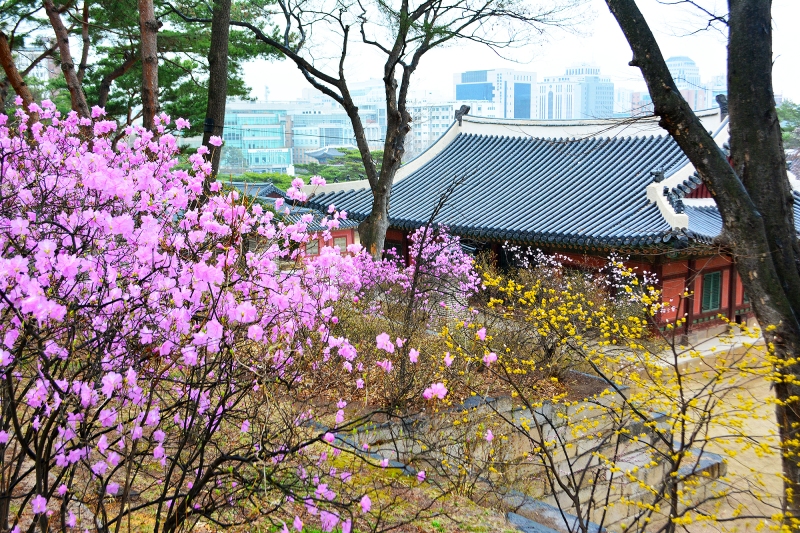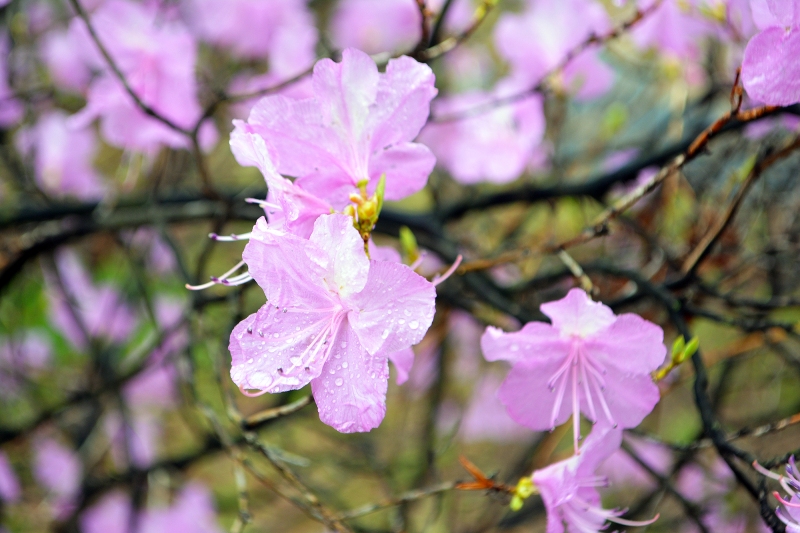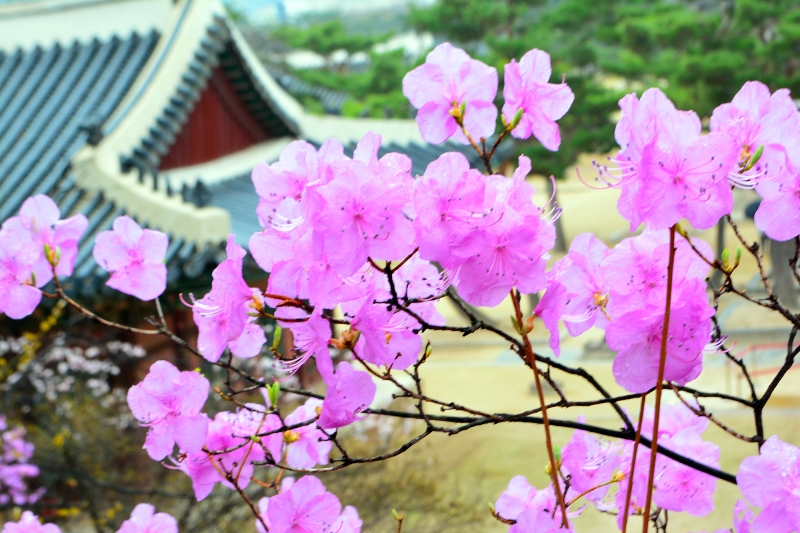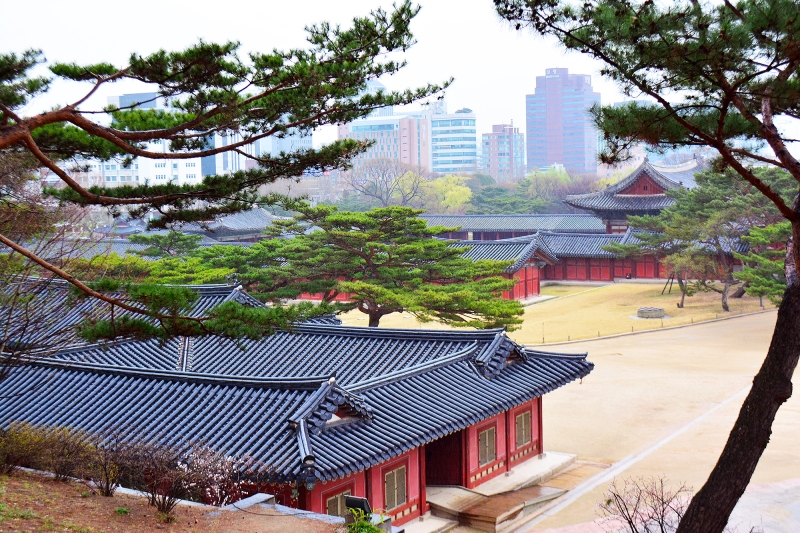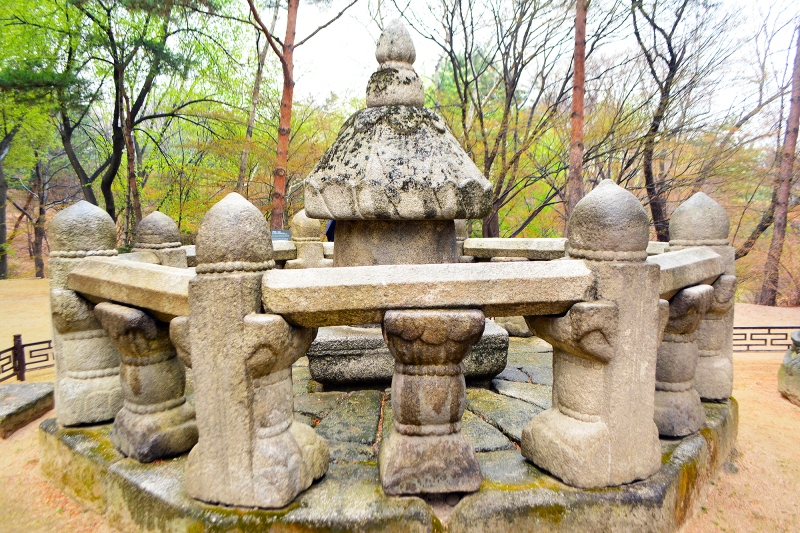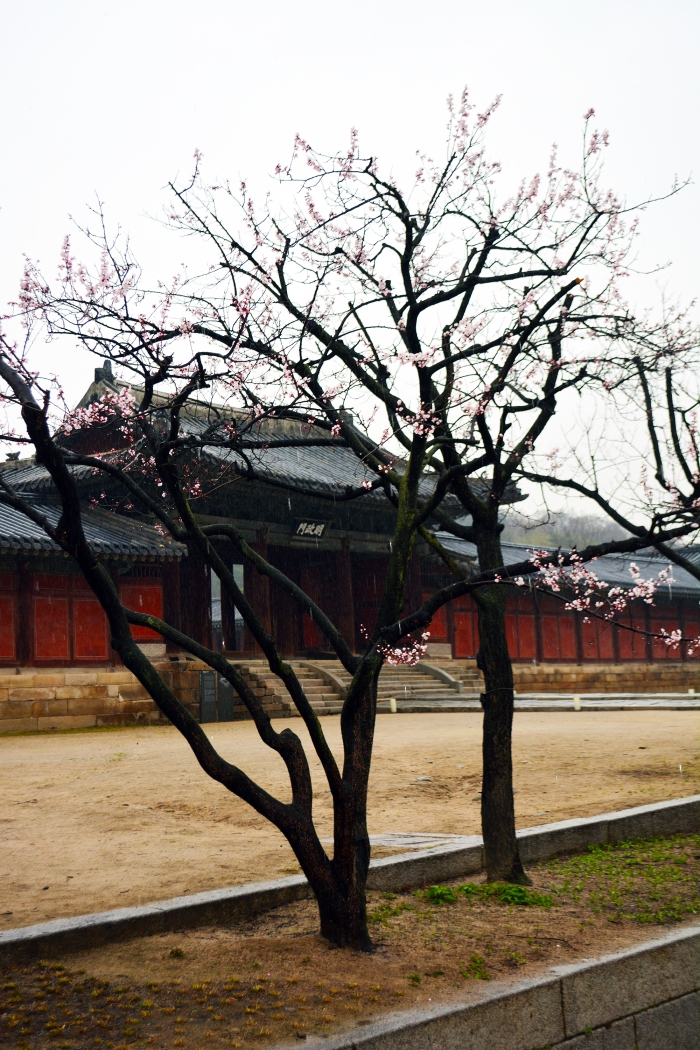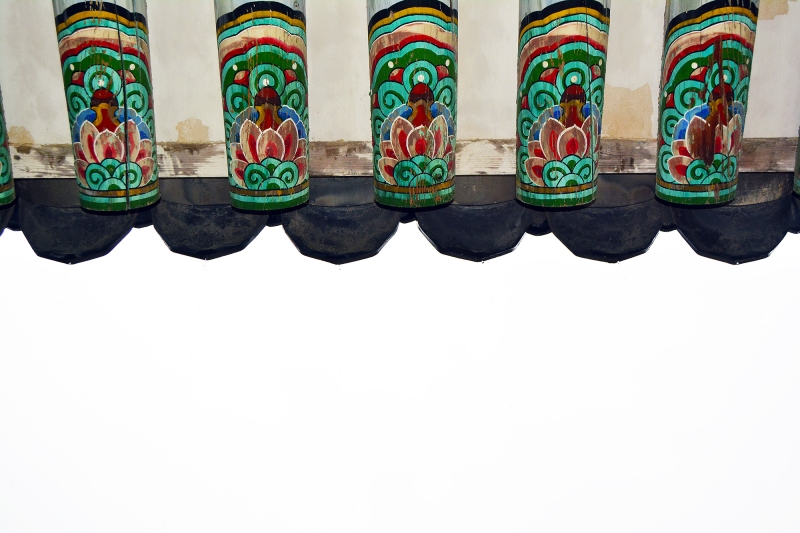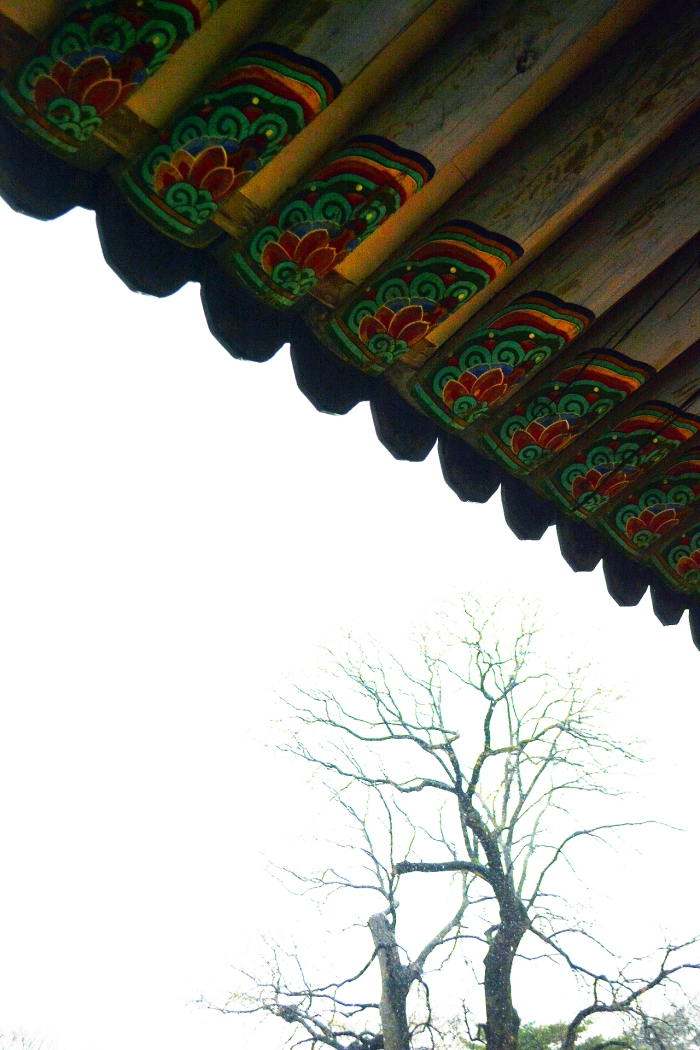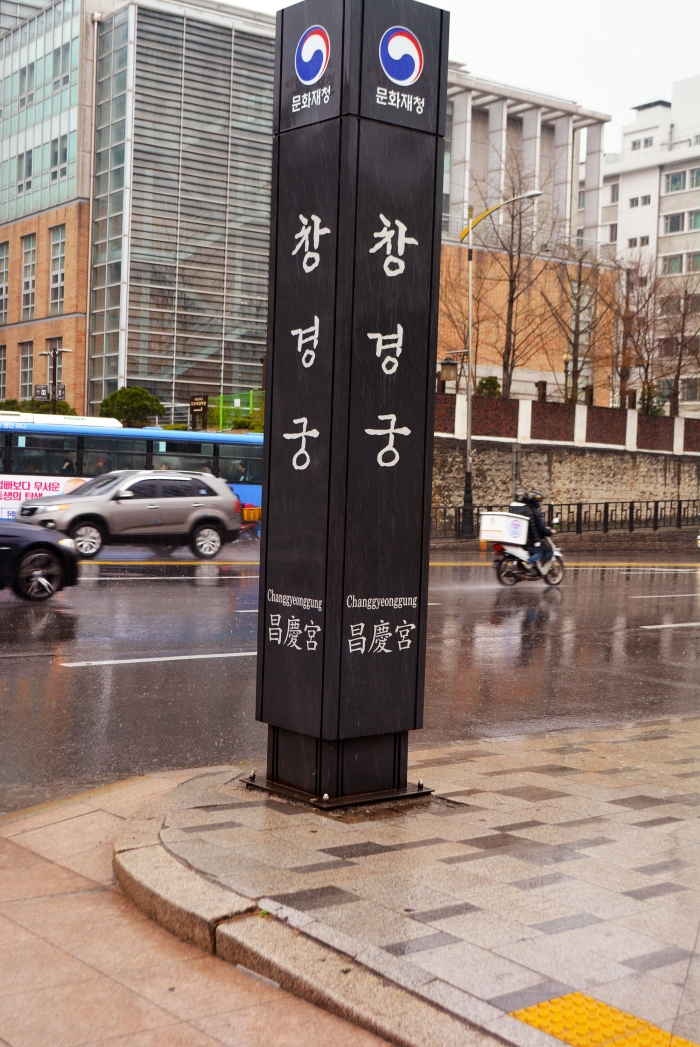I visited Changgyeonggung Palace during the early spring when beautiful spring flowers, such as plum blossoms, apricot flowers, and cherry blossoms, were blooming around every corner of the serene palace!
Though it was a rainy day on April 5, 2017, but the weather didn’t put a damper on my mood to admire the grandeur and simplicity of Changgyeonggung Palace
Changgyeonggung Palace—one of the hidden gems in South Korea, is not a common tourist attraction in Seoul
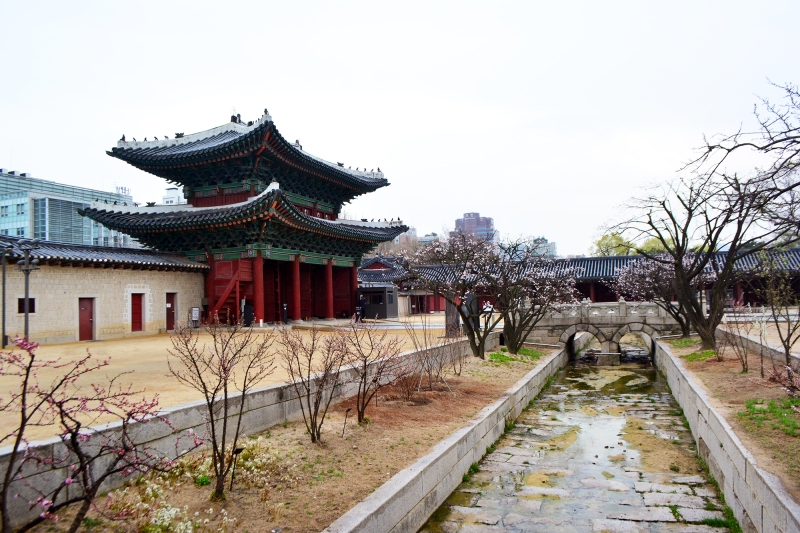
But, in my opinion, the sublime beauty of Changgyeonggung Palace surpasses that of the popular palaces such as Gyeongbokgung Palace and Changdeokgung Palace
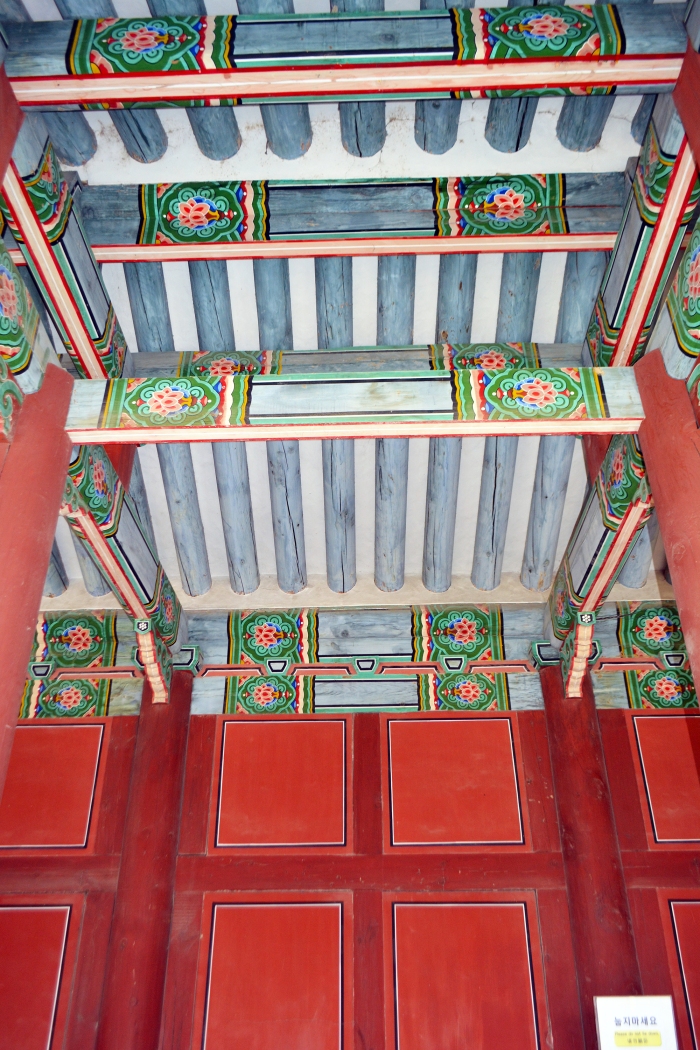 Changgyeonggung, situated nearby Changdeokgung, were collectively known as Donggwol, or the East Palace
Changgyeonggung, situated nearby Changdeokgung, were collectively known as Donggwol, or the East Palace
Changgyeonggung was initially built by King Sejong (r.1418-1450) as a retiring residence for his father, King Taejong. It was served as a secondary palace where the King’s father, the queens, the princesses, concubines, and the attendants lived
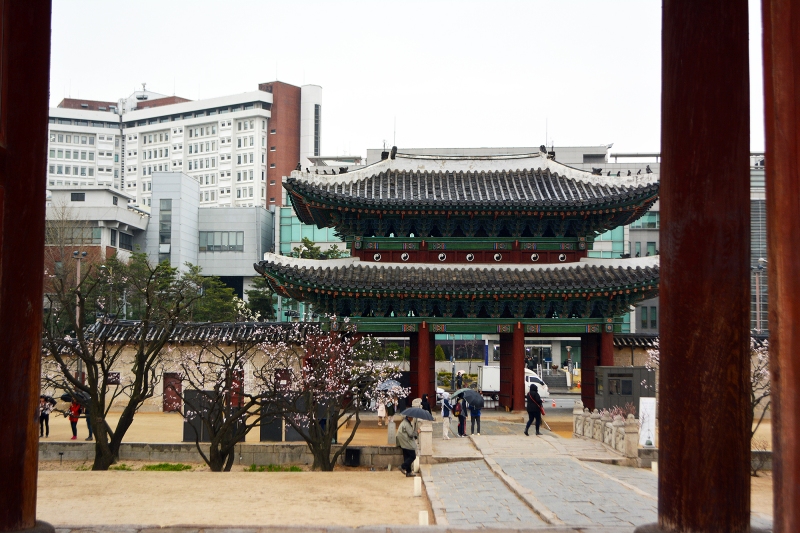 The palace was extended by King Seongjong (r.1469-1494) in 1483 and 1484, to include residences for the widows of King Sejo. It was during this time that the royal residence was renamed Changgyeonggung Palace
The palace was extended by King Seongjong (r.1469-1494) in 1483 and 1484, to include residences for the widows of King Sejo. It was during this time that the royal residence was renamed Changgyeonggung Palace
King Jeongjo ordered the construction Jagyeongjeon, situated above the ground of Changgyeonggung for his mother, Lady Hyegyeong, in 1777
 The beautiful rear garden of Jagyeongjeon offers a spectacular view of the surrounding area
The beautiful rear garden of Jagyeongjeon offers a spectacular view of the surrounding area
The chilling murder of Crown Prince Sado took place in the courtyard of Changgyeonggung Palace’s Munjeongjeon
To prevent mentally-ill Prince Sado from inheriting the throne, he was driven into confinement in a rice chest by his father, King Yeongjo. He was eventually starved to death eight days later.
This infamous secret was disclosed by Lady Hyegyeong, the wife of Prince Sado, in her memoir.
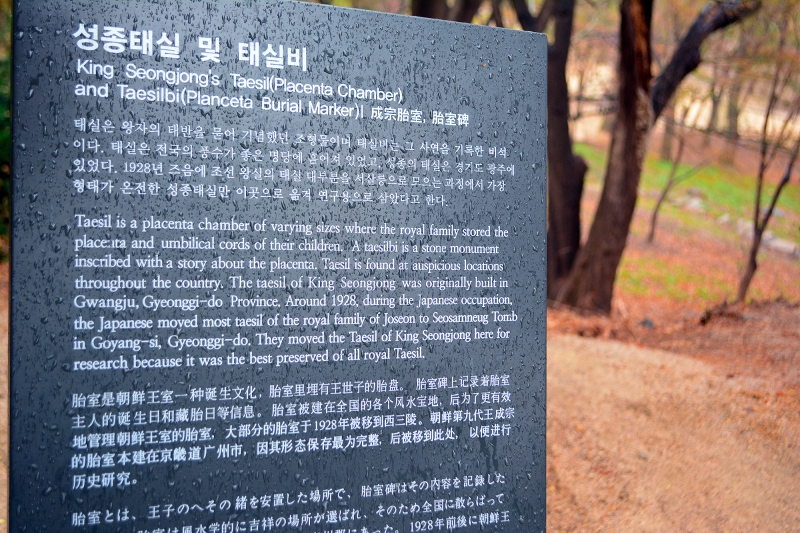 Taesil is a placenta chamber of various sizes where the royal family kept the placenta and umbilical cords of their children. Below is the Taesil of King Seongjong
Taesil is a placenta chamber of various sizes where the royal family kept the placenta and umbilical cords of their children. Below is the Taesil of King Seongjong
The Chundangji pond, comprises of one large pond and one small pond, was once the rice paddies and a mulberry field of the king and the queen
Changgyeonggung Palace was converted to a park with a zoo and a botanical garden during the Japanese occupation of Korea from 1910-1945
The Korean government eradicated the zoo in 1983, and Changgyeonggung Palace’s old charm was restored after years of reconstruction
Closed on Mondays
Address
185 Changgyeonggung-ro, Waryong-dong, Jongno-gu, Seoul, South Korea
Admission Fees (International visitors):
Adults (ages 19 and more): Individual 1,000 won / Group (over 10): 800 won
Children and Teenagers (ages 7-18): 500 won
Children under age 6: Free
Children and Teenagers (ages 7-18): 500 won
Children under age 6: Free
Getting there: (From http://english.visitkorea.or.kr/enu/FU/KTO_EN_15.jsp?cid=1910822)
- Alight at Anguk Station (Subway Line 3)
- Exit 3
- Walk straight from the exit (east) along Yulgok-ro for about 1 km.
- Turn left (north) onto Changgyeonggung-ro.
- Walk about 300m to find the palace entrance on the left.

